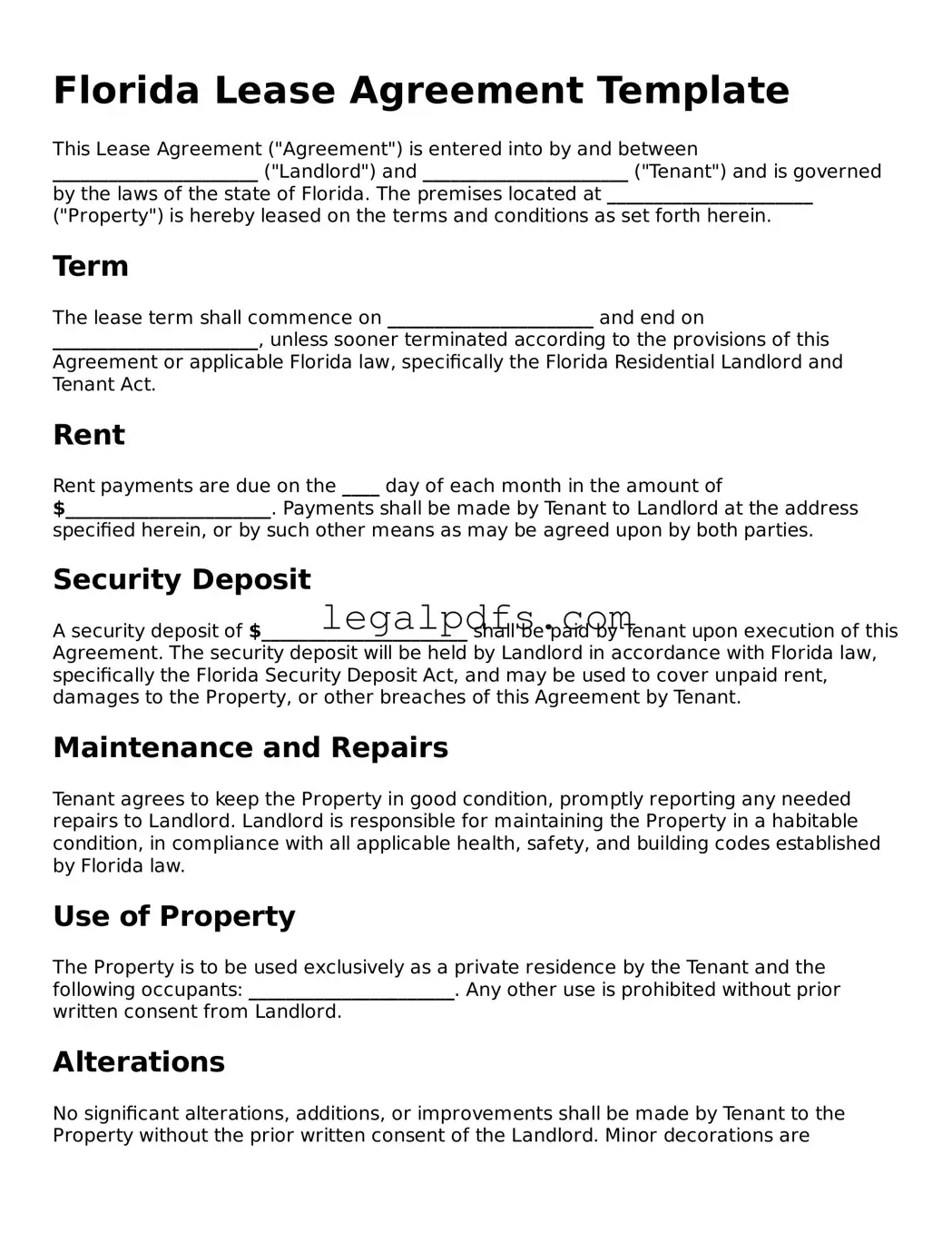Florida Lease Agreement Template
This Lease Agreement ("Agreement") is entered into by and between ______________________ ("Landlord") and ______________________ ("Tenant") and is governed by the laws of the state of Florida. The premises located at ______________________ ("Property") is hereby leased on the terms and conditions as set forth herein.
Term
The lease term shall commence on ______________________ and end on ______________________, unless sooner terminated according to the provisions of this Agreement or applicable Florida law, specifically the Florida Residential Landlord and Tenant Act.
Rent
Rent payments are due on the ____ day of each month in the amount of $______________________. Payments shall be made by Tenant to Landlord at the address specified herein, or by such other means as may be agreed upon by both parties.
Security Deposit
A security deposit of $______________________ shall be paid by Tenant upon execution of this Agreement. The security deposit will be held by Landlord in accordance with Florida law, specifically the Florida Security Deposit Act, and may be used to cover unpaid rent, damages to the Property, or other breaches of this Agreement by Tenant.
Maintenance and Repairs
Tenant agrees to keep the Property in good condition, promptly reporting any needed repairs to Landlord. Landlord is responsible for maintaining the Property in a habitable condition, in compliance with all applicable health, safety, and building codes established by Florida law.
Use of Property
The Property is to be used exclusively as a private residence by the Tenant and the following occupants: ______________________. Any other use is prohibited without prior written consent from Landlord.
Alterations
No significant alterations, additions, or improvements shall be made by Tenant to the Property without the prior written consent of the Landlord. Minor decorations are permitted but must be removed, and the Property restored to its original condition upon lease termination.
Tenant Obligations
- Pay rent and any utilities agreed upon in a timely manner.
- Maintain the Property's cleanliness and sanitary standards.
- Inform Landlord promptly of any damages or need for repairs.
- Abide by community rules and respect the rights and peace of neighbors.
- Obtain renters insurance if required by Landlord.
Landlord Obligations
- Ensure the Property complies with health and safety standards under Florida law.
- Make requested repairs in a timely manner,
- Respect the Tenant's right to quiet enjoyment of the Property.
- Provide ____ days' notice before entering the Property, except in emergencies.
Termination
This Agreement may be terminated by either party provided a ____ days' written notice is given. Upon termination, Tenant shall return the Property to Landlord in the same condition as at the beginning of the lease, reasonable wear and tear excepted.
Applicable Law
This Agreement shall be governed, interpreted, and construed in accordance with the laws of the State of Florida. Any disputes arising under this Agreement shall be adjudicated in the appropriate court within the State of Florida.
IN WITNESS WHEREOF, the parties have executed this Lease Agreement as of the date first above written.
Landlord Signature: ______________________
Tenant Signature: ______________________
